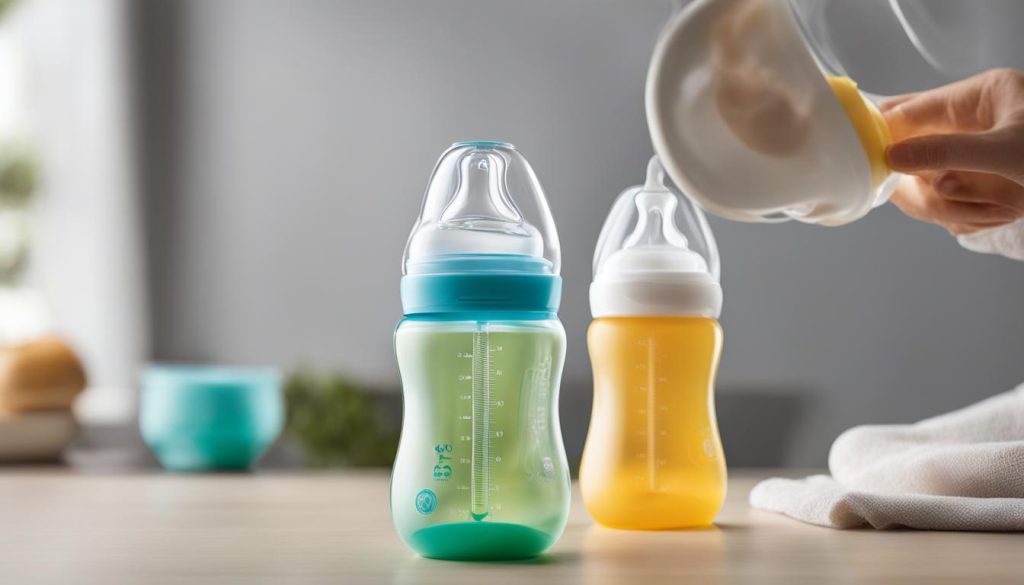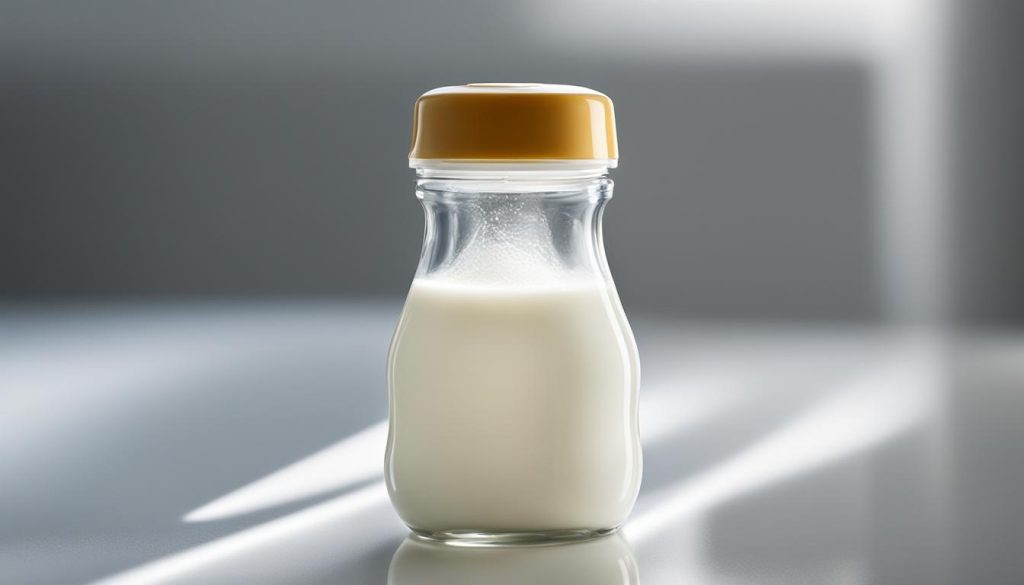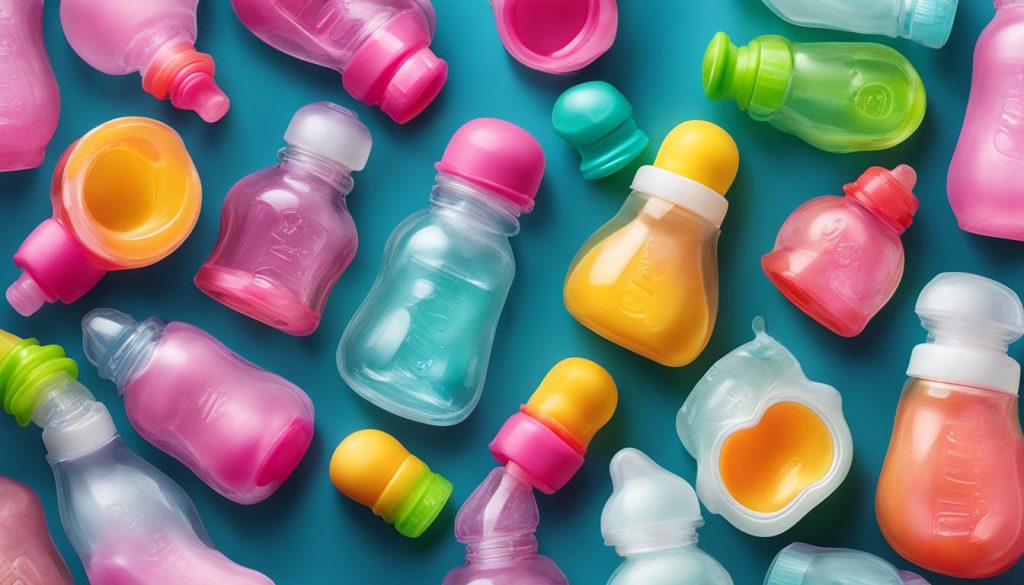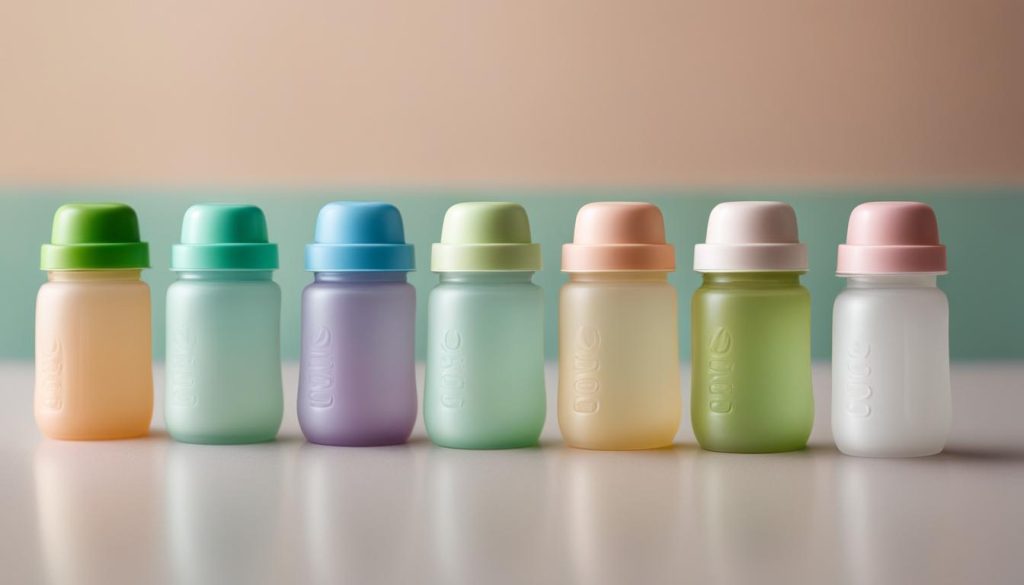If your baby is experiencing prolonged periods of crying and discomfort, it may be a sign of colic. Colic can be triggered by various factors, such as digestive issues, overfeeding, or milk allergies. To alleviate the symptoms and provide relief for your baby, using anti-colic bottles can be helpful. In this guide, we will explore the best anti-colic bottles available on the market to ease gas and reflux in infants.
When it comes to choosing the right anti-colic bottle for your baby, you want to ensure that it is effective, reliable, and of high quality. The top-rated anti colic bottles are designed with innovative and advanced features that help reduce colic symptoms and provide a better feeding experience for your little one. These bottles are recommended by parents and experts alike, making them the top-selling options in the market.
Do You Need Anti-Colic Bottles?
Anti-colic bottles can be highly beneficial for babies experiencing feeding issues and discomfort. These bottles are specifically designed to reduce the intake of air bubbles, which can help prevent gas and reflux in infants. If your baby appears fussy or uncomfortable after feeding, using an anti-colic bottle may provide relief and improve their overall feeding experience.
The anti-colic design of these bottles ensures that your baby gets the proper amount of milk or formula per feed while minimizing the discomfort caused by excessive air ingestion. By reducing air intake, anti-colic bottles can help ease colic symptoms and alleviate gas-related discomfort in your baby.
Colic relief and gas relief for babies are essential for their well-being, and using anti-colic bottles is one effective way to achieve this. These innovative bottles are designed with advanced features to promote smooth and comfortable feeding for your baby.
So, if your baby is showing signs of colic or experiencing feeding issues, it may be worth considering the use of anti-colic bottles to provide them with the relief they need.
Do Anti-Colic Bottles Help with Reflux Relief?
Yes, anti-colic bottles can also help with reflux relief in infants. Reflux occurs when stomach contents flow back into the esophagus, causing discomfort and spit-up in babies. The design of anti-colic bottles helps minimize the intake of air, which can contribute to reflux symptoms. By reducing the amount of air swallowed during feeding, these bottles can help alleviate reflux and provide relief for your baby.
What to Look for in an Anti-Colic Bottle
When selecting an anti-colic bottle for your baby, it’s important to consider certain features that can enhance their feeding experience and minimize discomfort. Here are some key factors to keep in mind:
Vent System or Valve
Look for a bottle that incorporates a vent system or valve design. This feature helps release trapped air from the bottle, preventing it from being ingested by your baby during feeding. By reducing the intake of air bubbles, these bottles can help alleviate gas and colic symptoms.
Slow Flow Nipple
Opt for a bottle with a slow flow nipple. This allows for a more controlled and steady pace of feeding, reducing the chances of your baby swallowing excess air. A slow flow nipple also mimics the natural flow of breast milk, promoting better digestion and minimizing feeding-related discomfort.
Easy to Clean Design
Consider a bottle that is easy to clean and maintain. Look for dishwasher-safe options or bottles with wide openings that allow for effortless cleaning. The ease of cleaning ensures that no residue or bacteria remains in the bottle, promoting a hygienic feeding environment for your little one.
| Anti-Colic Bottle Features | Vent System | Slow Flow Nipple | Easy to Clean Design |
|---|---|---|---|
| Brand A | ✓ | ✓ | ✓ |
| Brand B | ✓ | ✓ | ✓ |
| Brand C | ✓ | ✓ | ✓ |
Keep in mind that these features are important considerations, but the best anti-colic bottle for your baby will depend on their individual preferences and needs. It may be helpful to experiment with different brands and designs to find the one that works best for your little one.
The Best Anti-Colic Bottles
When it comes to choosing the best anti-colic bottles for your baby, there are several top-rated and recommended options available on the market. These bottles have proven to be effective in reducing colic symptoms and providing relief for infants. Here are some of the best anti-colic bottles that parents swear by:
| Brand | Features | Rating |
|---|---|---|
| Mam | Unique venting system that prevents air ingestion, self-sterilizing feature | 4.9/5 |
| Dr. Brown’s | Patented vent system that reduces air bubbles, comfortable feeding experience | 4.8/5 |
| Tommee Tippee | Optimum venting system for smooth milk flow, wide neck for easy cleaning | 4.7/5 |
| Comotomo | Soft, skin-like silicone material, dual anti-colic vents | 4.6/5 |
These anti-colic bottles have consistently received positive reviews from parents and are considered to be reliable, high-quality options. They feature innovative designs and advanced technology to reduce gas and reflux, providing a comfortable feeding experience for both babies and parents. It’s important to note that every baby is unique, so it may take some trial and error to find the best anti-colic bottle that suits your little one’s needs.
When considering the best anti-colic bottles, it’s essential to prioritize features such as a venting system or valve that helps release trapped air from the bottle. A slow flow nipple is also beneficial as it allows for a steady pace of feeding, preventing excessive air ingestion. Additionally, opt for bottles that are easy to clean, with dishwasher-safe or wide-opening designs for convenience.
By choosing one of these top-selling anti-colic bottles, you can provide your baby with effective relief from colic symptoms and ensure a more comfortable feeding experience. Remember to consult with your pediatrician for personalized recommendations and always trust your instincts as a parent when it comes to your baby’s well-being.
When to Stop Using Anti-Colic Bottles
As your baby grows and their digestive system develops, you may wonder when it’s time to transition from using anti-colic bottles. While there is no set timeline for when to stop using these specialized bottles, there are some signs to look for that can guide your decision.
If your baby is around three months old and showing fewer signs of discomfort, such as reduced gas or reflux, it may be an indication that they are ready to switch to a regular bottle. However, every baby is different, and it’s essential to trust your instincts as a parent and consider your little one’s individual needs and comfort.
Consulting with your pediatrician can provide additional guidance and support. They can help assess your baby’s overall feeding experience and assist in determining when it may be appropriate to transition from anti-colic bottles.
Signs that it may be time to transition from anti-colic bottles:
- Your baby shows reduced signs of discomfort, such as less fussiness or crying after feedings.
- Gas or reflux symptoms have significantly improved or resolved.
- Your baby is feeding well and gaining weight appropriately.
Tips for a smooth transition:
- Introduce the regular bottle gradually, starting with one or two feeds per day. Observe your baby’s response and make adjustments as needed.
- Choose a bottle with a slow-flow nipple to ensure a controlled and comfortable feeding pace.
- Continue to burp your baby during and after feedings to help alleviate any trapped air.
- Monitor your baby’s feeding patterns and behavior closely during the transition period to ensure they are still comfortable and getting enough nourishment.
Remember, the transition from anti-colic bottles is a gradual process that can vary for each baby. Be patient, trust your intuition, and consult with your healthcare provider for personalized advice and recommendations.
Bottle Maintenance and Sterilization Tips
Proper bottle cleaning and sterilization are crucial for ensuring the health and safety of your baby. By following these maintenance tips, you can keep your baby bottles in optimal condition:
1. Wash bottles after each use
After each feeding, thoroughly wash the bottle, nipple, and any other parts with warm soapy water. Use a bottle brush to clean hard-to-reach areas and rinse everything thoroughly to remove any soap residue.
2. Sterilize bottles regularly
To eliminate bacteria and maintain a hygienic environment for your baby, it’s important to sterilize the bottles regularly. You can do this by boiling them in a pot of water for 5-10 minutes or using a steam sterilizer. Be sure to check the manufacturer’s instructions for specific sterilization guidelines.
3. Inspect for damage
Regularly inspect your baby bottles for any signs of wear or damage. Discard any bottles with cracks, chips, or weakened areas, as they can pose a safety risk. It’s important to replace damaged bottles to ensure your baby’s health and well-being.
Remember to also clean and sterilize other feeding accessories, such as bottle brushes, drying racks, and storage containers, to maintain a clean and safe feeding environment for your little one.
Following these bottle maintenance and sterilization tips will not only help keep your baby healthy but also prolong the lifespan of your baby bottles, ensuring they remain in good condition for future use.
Expert Advice on Anti-Colic Bottles
When it comes to choosing the best anti-colic bottle for your baby, expert recommendations can provide valuable insights. Pediatricians emphasize the importance of selecting bottles with specific features that can help alleviate feeding issues and discomfort. Here are some expert tips to consider:
The Importance of Vent Systems
Experts recommend opting for anti-colic bottles that have vent systems or valves. These features help release trapped air from the bottle, reducing the intake of air bubbles during feeding. By minimizing the amount of air ingested, these bottles can help prevent gas and reflux, promoting a more comfortable feeding experience for your baby.
Slow Flow Nipples for Controlled Feeding
Another key recommendation from pediatricians is to choose bottles with slow flow nipples. These nipples allow for a more steady pace of feeding, reducing the chances of your baby swallowing air. The controlled flow helps prevent overfeeding, which can contribute to colic symptoms. Slow flow nipples mimic the natural flow of breastfeeding, ensuring that your baby gets the right amount of milk or formula per feed.
Easy Cleaning Options for Convenience
When selecting an anti-colic bottle, experts also advise considering the ease of cleaning. Look for bottles with dishwasher-safe or wide-opening designs that allow for thorough cleaning. Regularly cleaning and sterilizing the bottles is essential for maintaining your baby’s health and safety. Convenient cleaning options can make this process more manageable for busy parents.
By following these expert recommendations and considering the specific needs of your baby, you can choose an anti-colic bottle that will provide the necessary relief and comfort during feeding. However, always trust your instincts as a parent and observe your baby’s behavior after feedings. Consult with your pediatrician for personalized advice and guidance to ensure the best feeding experience for your little one.
Conclusion
In conclusion, using anti-colic bottles can greatly alleviate the discomfort and symptoms of colic in babies. These bottles are designed to reduce the intake of air bubbles during feeding, effectively preventing gas and reflux. By selecting a bottle with a vent system, slow flow nipple, and easy-to-clean features, you can provide your baby with a more comfortable and enjoyable feeding experience.
Remember, finding the best anti-colic bottle may require some trial and error, as every baby is unique. Trust your instincts as a parent and observe your baby’s behavior after feedings to determine the effectiveness of the chosen bottle. If you have any concerns or questions, it is always a good idea to consult with your pediatrician for personalized recommendations and guidance.
By following proper bottle maintenance and sterilization practices, you can ensure the health and safety of your baby. Regularly clean and sterilize the bottles to prevent the buildup of bacteria and germs. With these tips in mind and the expert advice provided, you can make an informed decision when choosing the best anti-colic bottle for your little one.
FAQ
Do anti-colic bottles help relieve colic symptoms in babies?
Yes, anti-colic bottles can be beneficial for babies experiencing feeding issues and discomfort. They help reduce the intake of air bubbles, preventing gas and reflux.
What features should I look for in an anti-colic bottle?
Look for a bottle with a vent system or valve that helps release trapped air from the bottle. A slow flow nipple allows for a more steady pace of feeding, reducing the chances of swallowing air. Additionally, opt for bottles that are easy to clean, with dishwasher-safe or wide-opening designs.
Which are the top-rated and recommended anti-colic bottles available?
Some of the top-rated and recommended anti-colic bottles are [list of bottles].
When should I stop using anti-colic bottles?
Most babies can transition out of using these bottles around the three-month mark, as colic symptoms tend to lessen by this time. However, it ultimately depends on your baby’s individual needs and comfort. Consult with your pediatrician if you have any concerns.
How should I maintain and sterilize anti-colic bottles?
Proper bottle maintenance and sterilization are essential for your baby’s health and safety. Wash bottles thoroughly with warm soapy water and use a bottle brush to reach all areas. Sterilize the bottles by boiling them in water or using a bottle sterilizer. Avoid using abrasive cleaners or scrubbers as they can damage the bottles.
What do pediatricians and experts recommend regarding anti-colic bottles?
Pediatricians and experts recommend anti-colic bottles as a potential solution for babies experiencing feeding issues and discomfort. They emphasize the importance of choosing bottles with vent systems, slow flow nipples, and easy cleaning options. Consult with your pediatrician for personalized recommendations and guidance.




